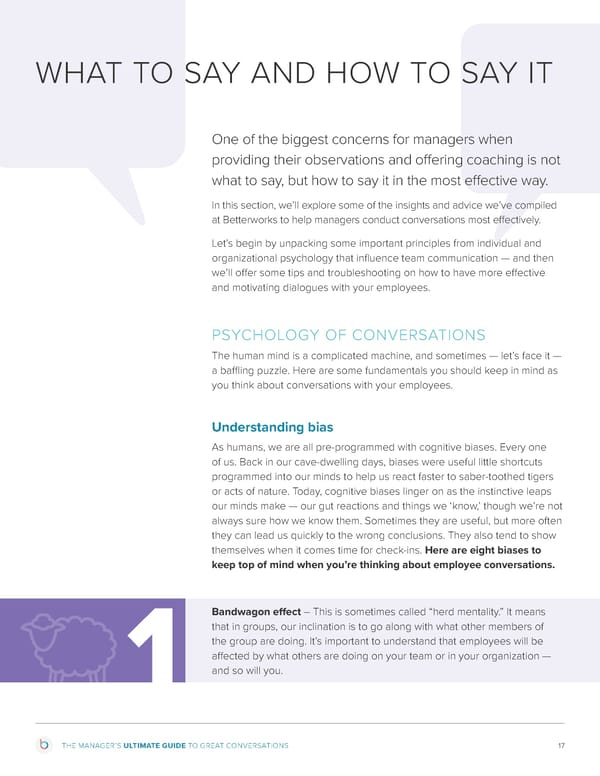WHAT TO SAY AND HOW TO SAY IT One of the biggest concerns for managers when providing their observations and o昀昀ering coaching is not what to say, but how to say it in the most e昀昀ective way. In this section, we’ll explore some of the insights and advice we’ve compiled at Betterworks to help managers conduct conversations most e昀昀ectively. Let’s begin by unpacking some important principles from individual and organizational psychology that in昀氀uence team communication — and then we’ll o昀昀er some tips and troubleshooting on how to have more e昀昀ective and motivating dialogues with your employees. PSYCHOLOGY OF CONVERSATIONS The human mind is a complicated machine, and sometimes — let’s face it — a ba昀渀ing puzzle. Here are some fundamentals you should keep in mind as you think about conversations with your employees. Understanding bias As humans, we are all pre-programmed with cognitive biases. Every one of us. Back in our cave-dwelling days, biases were useful little shortcuts programmed into our minds to help us react faster to saber-toothed tigers or acts of nature. Today, cognitive biases linger on as the instinctive leaps our minds make — our gut reactions and things we ‘know,’ though we’re not always sure how we know them. Sometimes they are useful, but more often they can lead us quickly to the wrong conclusions. They also tend to show themselves when it comes time for check-ins. Here are eight biases to keep top of mind when you’re thinking about employee conversations. Bandwagon e昀昀ect – This is sometimes called “herd mentality.” It means that in groups, our inclination is to go along with what other members of the group are doing. It’s important to understand that employees will be a昀昀ected by what others are doing on your team or in your organization — 1 and so will you. THE MANAGER’S ULTIMATE GUIDE TO GREAT CONVERSATIONS 17
 Immersive Experience | The Manager's Ultimate Guide to Great Conversations Page 16 Page 18
Immersive Experience | The Manager's Ultimate Guide to Great Conversations Page 16 Page 18